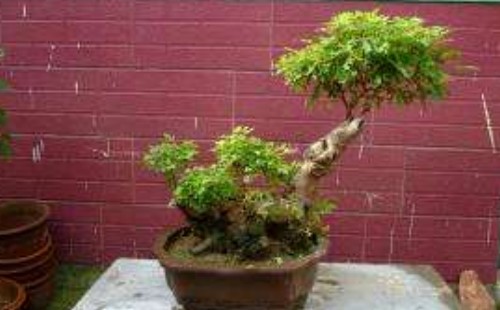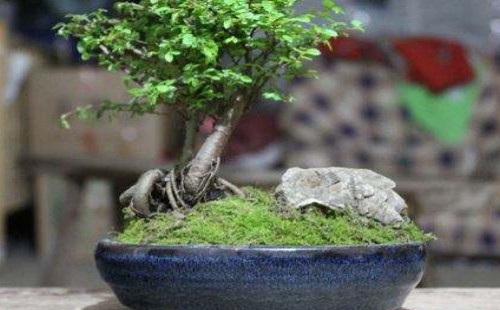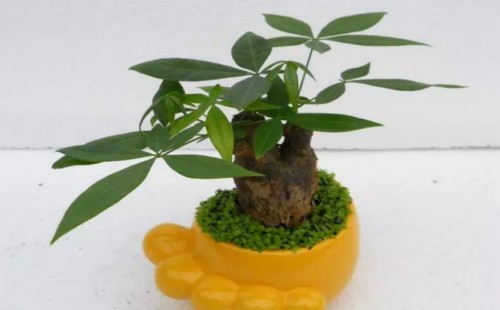Maintenance of bonsai with bumps in bauhinia trees
Bauhinia knot bonsai shape is changeable, branches and leaves evergreen, blooming purple flowers accompanied by a touch of fragrance, high ornamental value. At the same time, the bauhinia also has indomitable vitality and can well adapt to the harsh growth environment. Bauhinia trees not only like light and warmth, but also resistant to shade and cold, but also do not have high requirements for the soil, like moisture, so according to these habits and characteristics, we can well grasp its growth law and create a good growth environment for it.

Since the bauhinia bonsai is tenacious and can adapt to the harsh and growing environment, it is easier to plant and raise it. Even if it is kept indoors, it is often easier to keep it well. So, how to raise the bonsai of thorn trees? Next, the editor will share with you the maintenance and management methods of bonsai with bumps in bauhinia trees.
First, basin soil
Many varieties of bauhinia are relatively resistant to barren, have relatively low requirements for soil, and often survive even in a slightly salinized soil environment. However, in order to better maintain its growth, we still need to prepare a fertile and loose, permeable and permeable soil environment. And we need to use a deep basin for planting and cultivation, although the bauhinia tree is a shallow root tree species, but its root system is still relatively developed, prefer deep soil.
Second, lighting
Bauhinia trees like the light, especially in the growing season. When the light is full, the trees will grow better, the original leaves will be greener, and the ornamental value will be higher. However, proper shading is also recommended in the hot summer sun to prevent the leaves from being burned. At the same time, the bauhinia tree is also more shady, so it is also suitable for indoor maintenance. However, the indoor environment can not be too shady, generally placed in a bright place facing the sun, so that you can receive scattered light to maintain normal photosynthesis.
Third, temperature
Bauhinia likes a warm growing environment, so it is often seen in the vast areas of the south of our country. However, the bauhinia tree is also relatively hardy, and can even withstand the low temperature of-5 °C, especially the black bauhinia, and can even withstand the ultra-low temperature of-60 °C for a short time without freezing to death. However, the bauhinia tree is more sensitive to frost, so it is necessary to take timely measures to keep warm and keep warm when the winter temperature is too low to avoid frost damage and affect the overwintering.
Fourth, watering
Although the bauhinia tree prefers the moist growth environment, its water tolerance is not strong. If the tree roots are soaked in water for a long time due to excessive watering, it will often cause stuffy roots, especially in high temperature weather. Therefore, as long as the basin soil is very dry, generally there is no need to rush to water, and usually need to wait until the basin soil dries before pouring water.
5. Fertilization
Bauhinia has tenacious vitality, which can be well reflected in the growth process of the wild. As the bauhinia tree is more tolerant to barren, the degree of dependence on fertilizer is not high, even if fertilization, it is often thin. Do not apply a large amount of fertilizer, otherwise it is easier to cause the phenomenon of overgrown branches and leaves, and it is easy to change the shape of bonsai, thus affecting viewing.
VI. Diseases and insect pests
As there are many harmful bacteria in the soil, this is often harmful to the pimple of the bauhinia tree. Therefore, in addition to putting on the basin, it is suggested that the basin soil should be disinfected and sterilized, and the prevention and control work should also be done well in the process of maintenance and management. Different bauhinia varieties are sometimes vulnerable to different diseases and insect pests, such as anthracnose, blight, gum disease, black grasshopper, beetle, butterfly moth, leaf beetle and so on. Therefore, at ordinary times, in addition to improving the more suitable growth environment, we should also do a good job of management and protection.
Of course, the above points are several important aspects of raising the bonsai with pimples. If you want to keep the bonsai with bumps in a good viewing state, you often need to do a good job in pruning, shaping, changing pots and other related work. Here, the editor will not repeat them one by one. I hope you will explore and summarize more in practice.
Time: 2019-05-29 Click:
- Prev

Maintenance and management of balcony bonsai in summer
Many potted friends like to grow some bonsai green plants on their own balcony, on the one hand, they can decorate the space, on the other hand, they can also appreciate them, and at the same time, they can bring us a touch of green and cool feeling in summer. However, because the summer weather is hot and the temperature is high, bonsai plants can become unbearable.
- Next

How to raise potted rich trees in autumn
The rich tree not only likes the warm, sunny and humid growth environment, but also has a certain shade tolerance ability, and the temperature under the most suitable growth environment should be kept between 20 ℃-30 ℃. As long as we can create a comfortable growth environment for it, the rich tree can maintain a good growth.
Related
- Fuxing push coffee new agricultural production and marketing class: lack of small-scale processing plants
- Jujube rice field leisure farm deep ploughing Yilan for five years to create a space for organic food and play
- Nongyu Farm-A trial of organic papaya for brave women with advanced technology
- Four points for attention in the prevention and control of diseases and insect pests of edible fungi
- How to add nutrient solution to Edible Fungi
- Is there any good way to control edible fungus mites?
- Open Inoculation Technology of Edible Fungi
- Is there any clever way to use fertilizer for edible fungus in winter?
- What agents are used to kill the pathogens of edible fungi in the mushroom shed?
- Rapid drying of Edible Fungi

